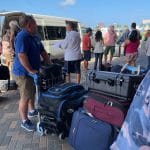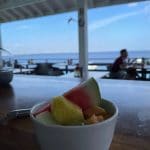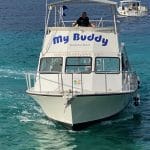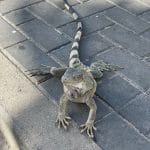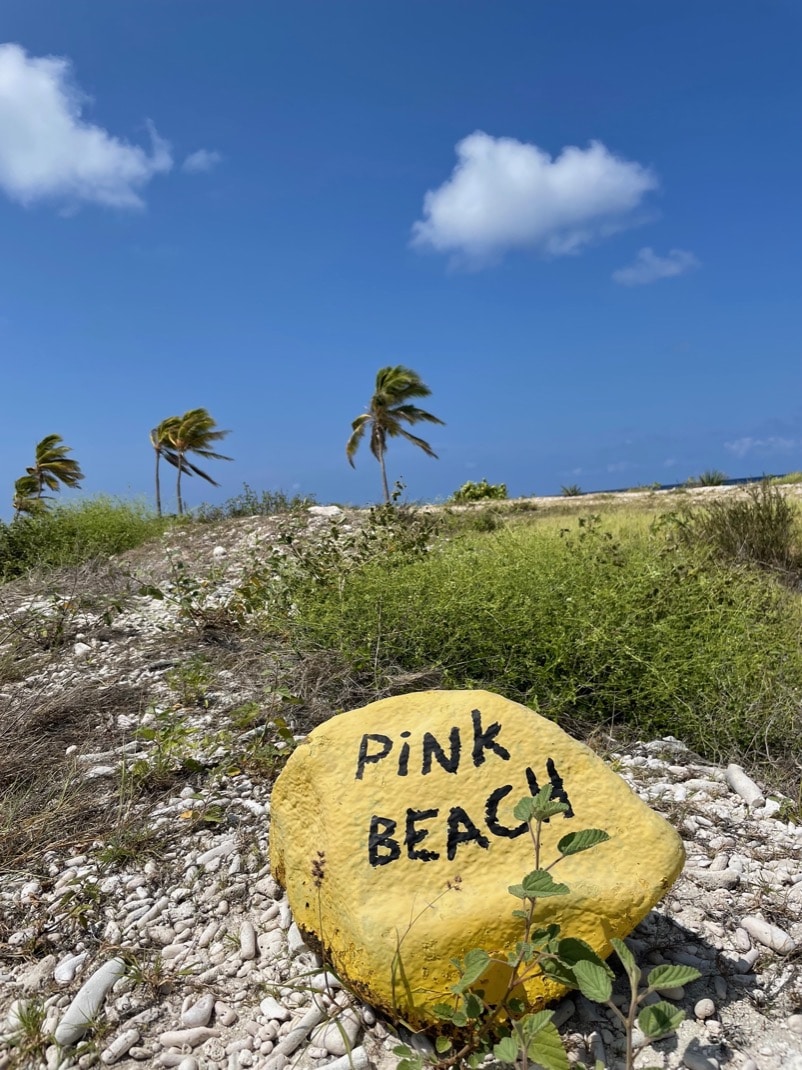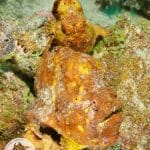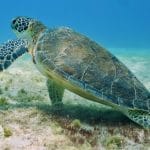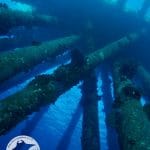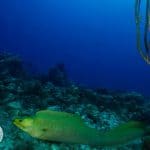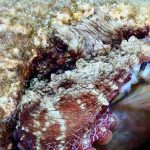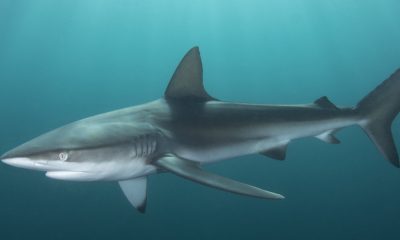News
The Scuba Genies head to Bonaire! Part 1 of 2

In the first of this two-part blog, The Scuba Genies share their trip report from the Come Dive with Us hosted trip to Bonaire in September 2021…
Travelling during the Covid pandemic has been challenging for some, impossible for most, and missed by all. We have been scanning the rules and regulations daily, and as soon as the UK Government allowed us, we were off!
What was supposed to be a trip to Mexico for a gang of 12 of us, just like most trips over the last 18 months, we were forced to change as the travel rules changed – we have been trying to get to Bonaire for ages, and this became the perfect opportunity – at last!
With our bags packed, negative test results and completed Bonaire health forms in hand – we made an early start for Heathrow, prepared for an 0630 departure. A quick flight and we landed in Amsterdam. As a Dutch Caribbean territory, all flights from the UK to Bonaire on KLM go via Amsterdam. In the airport, we met up with the rest of the gang who had travelled from Birmingham. After a quick layover we took off for Bonaire, where we arrived about 9 hours later. Our health documents were checked at the airport, and we grabbed our bags. It seems odd to have to fly East to then go West, but as we stepped out of the minibus at Buddy Dive Resort, only 10 minutes after leaving the airport, the sunshine and blue sky told us it was worth it!
Our accommodation for the group was made up of two 3-bedroom apartments, a stone’s throw from the water, dive shop, dock and Blennies, the main restaurant and bar. Buddy Dive also has 1- and 2-bedroom apartments along with studios, all comfortably furnished with either a garden or ocean view.
Each 3-bedroom apartment is spread over two floors – but a floor up from ground level. The ‘ground’ floor of each apartment offers a double bedroom (beds can be configured as twins or double in all rooms), a bathroom, lounge with balcony, and a very well-equipped kitchenette. Microwave, toaster, hob, fridge/freezer with ice-maker and enough pots, pans and utensils to satisfy the avid cook! On the upper floor, there are two further double rooms with ensuite bathrooms, both with balconies of their own. Each bedroom is air-conditioned, and the lounge and kitchen have celling fans. All in all, quite perfect for a home away from home for a fortnight!
The rules of group travel say we must unpack (empty bags onto floor or bed), sort kit out (look at dive bag and save it for later), put cameras together (er….NO!) and hit the bar – so being rule-abiding people that we are, this is what we did. Picking up the rental van for our stay would have to wait!
The next morning after breakfast, served in the Ingridients restaurant and right on the water, we attended the Buddy Dive orientation. The staff gave us a quick tour of the dock and resort including the famous drive thru tank shed offering both air and nitrox tanks ready and waiting to be loaded into your vehicle. Check in at the dive centre was easy… we all completed our diver forms online before arrival so with a quick hello we were handed locker keys for our kit storage. Time to head back to the room and get ready for our first dive!! That is why we’re here after all!
As with all trips, the first dive was a check dive, so we climbed down the steps into the water off the dock to go an explore Buddy Dive Reef. Finning over the sandy bottom, past the coral restoration project ‘trees’ and following well laid lines with directional markers we hit the reef after just a minute or two where you can drop to 35+ metres over simply stunning corals. This reef, just like the rest of the sites we dived, is super-healthy and teeming with juvenile fish wherever you look. Moray eels, turtles, octopi and HUGE tarpon on our first dive! What a great start!
The following day we decided it was time to explore the island. We picked up our 6-person minibus from Reception, pulled up to the drive thru tank station and grabbed 12 well filled Nitrox 12l aluminium (A-Clamp – not DIN) cylinders. With our guidebook in hand, off we went driving on the right of course, in search of marine life.
There are over 50 dive sites scattered around the coast of the main island, and even more on the island of Klein Bonaire accessible by boat. We chose a comfortable start by picking dive sites to the South where the entry seems to be a little easier on old knees and hips. We packed up sandwiches we made after a quick shop at the supermarket the day before, along with waters and a few essentials – towels, sunnies and bug spray.
I won’t bore you with every dive site name and description – the guidebook is the tool for that – but it is more than safe to say that we dived, dived and dived again! Every dive gave us far more than we expected, and the marine park surrounding the whole island delivered the goods without fail. Super healthy corals, plentiful marine life, warm and very clear water at 30 degrees made life easy. Parking the van up at the marked dive sites wasn’t difficult, and a few strides across the sand was far simpler than we had expected.
I will say that some sites are a little more challenging to get into the water from – anything more than three or four steps doesn’t float my boat! We adapted our entries for the group – some kitting up in the water, some not, but the rule of thumb quickly became step in up to thigh-depth, inflate bcd, fall flat on your back and paddle out before putting your fins on. Simple! Getting out of the water was pretty much the reverse of the above – stand up when you can, remove fins, and then navigate the rocks and sand channels before you walk up the beach. Nothing that an over-weight, under-tall chap in his mid-50’s with dodgy knees and even dodgier hips couldn’t cope with! (That is me by the way…..no offense to anyone else intended and no animals were harmed in the writing of this either).
We saw stuff – lots of it! Huge tarpon, French and Grey Angelfish, forests of Christmas Tree worms, anemones with Peterson, sexy and cleaner shrimp, clinging crabs, nudibranchs – especially lettuce-leaf slugs, coral-banded shrimp, lobster and so much more. Turtles everywhere, trumpet-fish in unbelievable numbers, and that was generally the story – all in very good visibility too! The corals and huge sponges were stunning with fascinating reef-structures offering all sorts of hidey-holes for critters!
There were some really special sited that we loved, and Salt Pier was one. The Cargill solar salt facility is easily found with its distinctive line of white salt pyramids.Each pyramid, roughly 50-feet high, can contain up to 10,000 metric tons of 99.6 percent pure salt. Even more noteworthy, in addition to the acres of salt ponds, the facility is also home to largest pink flamingo sanctuary in North America. Our very own Chloe has written an in-depth blog about Bonaire and its pure salt so be sure and check it out!
Back to the diving! We were given a hint to drive just past the pier to park where we would find an easy sand entry to the site. We kitted up and finned out through the shallows where we encountered three juvenile hawksbill turtles along with a few smooth pufferfish fighting to feed on patch of sponges, and then made our way under the immense structure of the pier. There are several platforms supporting the conveyor belts that move salt to the container ships and there wasn’t much diver-traffic to contend with. We were amazed by all things weird and wonderful – big scorpion fish hiding under the metal work, angelfish battling for food, schooling fish up above you, and frogfish! Barracuda, Caribbean reef squid, spotted drums, octopus, oh! and more frogfish! Even a flying gurnard in the shallows! What a dive! And as it is shallow, it can be a very long dive too, especially with the 200-210 bar fills the drive-thru often gave us.
Check back for Part Two of this Blog tomorrow!
Find out more about the worldwide dive itineraries that The Scuba Place offers at  www.thescubaplace.co.uk.
www.thescubaplace.co.uk.
News
Dive Worldwide Announces Bite-Back as its Charity of the Year

Over the next 12 months, specialist scuba holiday company Dive Worldwide will be supporting Bite-Back Shark & Marine Conservation with donations collected from client bookings to any one of its stunning dive destinations around the world. The independently-owned operator expects to raise £3000 for the UK charity.
Manager at Dive Worldwide, Phil North, said: “We’re especially excited to work with Bite-Back and support its intelligent, creative and results-driven campaigns to end the UK trade in shark products and prompt a change in attitudes to the ocean’s most maligned inhabitant.”
Bite-Back is running campaigns to hold the media to account on the way it reports shark news along with a brand new nationwide education programme. Last year the charity was credited for spearheading a UK ban on the import and export of shark fins.
Campaign director at Bite-Back, Graham Buckingham, said: “We’re enormously grateful to Dive Worldwide for choosing to support Bite-Back. The company’s commitment to conservation helps set it apart from other tour operators and we’re certain its clients admire and respect that policy. For us, the affiliation is huge and helps us look to the future with confidence we can deliver against key conservation programmes.”
To launch the fundraising initiative, Phil North presented Graham Buckingham with a cheque for £1,000.
Visit Dive Worldwide to discover its diverse range of international scuba adventures and visit Bite-Back to learn more about the charity’s campaigns.
MORE INFORMATION
Call Graham Buckingham on 07810 454 266 or email graham@bite-back.com
Gear News
Scubapro Free Octopus Promotion 2024
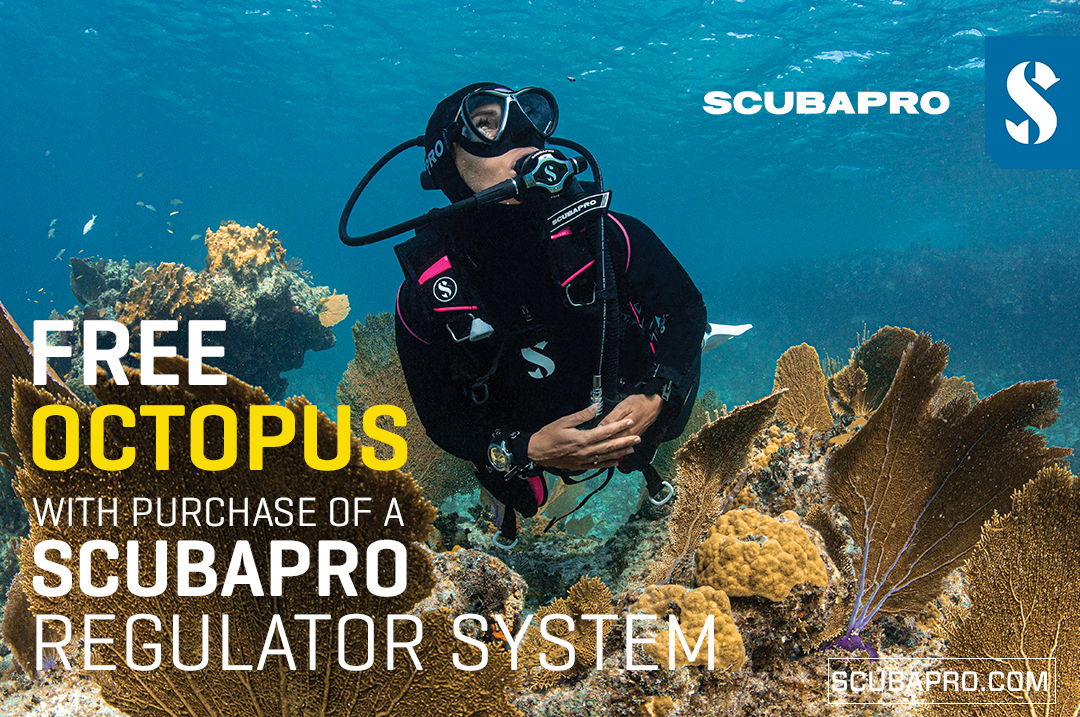
Free Octopus with every purchase of a SCUBAPRO regulator system
Just in time for the spring season, divers can save money with the FREE OCTOPUS SPRING PROMOTION! Until July 31st SCUBAPRO offers an Octopus for free
with every purchase of a regulator system!
Get a free S270 OCTOPUS with purchase of these combinations:
MK25 EVO or MK19 EVO with A700
MK25 EVO or MK19 EVO with S620Ti
MK25 EVO or MK19 EVO with D420
MK25 EVO Din mit S620Ti-X
Get a free R105 OCTOPUS with purchase of the following combinations:
MK25 EVO or MK19 EVO with G260
MK25 EVO or MK17 EVO with S600
SCUBAPRO offers a 30-year first owner warranty on all regulators, with a revision period of two years or 100 dives. All SCUBAPRO regulators are of course certified according to the new European test standard EN250-2014.
Available at participating SCUBAPRO dealers. Promotion may not be available in all regions. Find an authorized SCUBAPRO Dealer at scubapro.com.
More information available on www.scubapro.com.
-

 News3 months ago
News3 months agoHone your underwater photography skills with Alphamarine Photography at Red Sea Diving Safari in March
-

 News3 months ago
News3 months agoCapturing Critters in Lembeh Underwater Photography Workshop 2024: Event Roundup
-

 Marine Life & Conservation Blogs3 months ago
Marine Life & Conservation Blogs3 months agoCreature Feature: Swell Sharks
-

 Blogs2 months ago
Blogs2 months agoMurex Resorts: Passport to Paradise!
-

 Blogs2 months ago
Blogs2 months agoDiver Discovering Whale Skeletons Beneath Ice Judged World’s Best Underwater Photograph
-

 Marine Life & Conservation2 months ago
Marine Life & Conservation2 months agoSave the Manatee Club launches brand new webcams at Silver Springs State Park, Florida
-

 Gear Reviews3 months ago
Gear Reviews3 months agoGear Review: Oceanic+ Dive Housing for iPhone
-

 Gear Reviews2 weeks ago
Gear Reviews2 weeks agoGEAR REVIEW – Revolutionising Diving Comfort: The Sharkskin T2 Chillproof Suit





